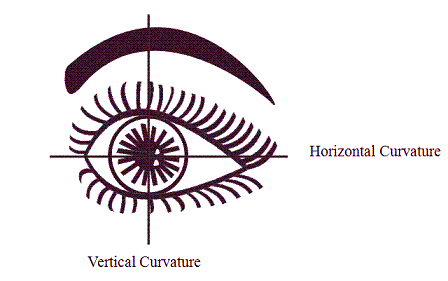Eyes / Vision
Astigmatism
Symptoms
Astigmatism may coexist with short-sightedness or long-sightedness. In fact, their symptoms are quite similar except that people with astigmatism will complain of blurring in both near and distant vision. The higher the degree of astigmatism, the more blurred the vision at all distances.
Formation
Astigmatism occurs when the cornea curvature is irregular. Normally, the cornea is a perfect sphere, but it is elliptically shaped in the astigmatic eye. In short, astigmatism occurs whenever the vertical curvature of the cornea is different from the horizontal.

Causes
Astigmatism is usually inherited. It may also due to environmental factors such as reading habit and inadequate lighting. Choosing a fluorescent tube or light bulb has no effect on the formation of astigmatism, and the reflection of the blackboard in the classroom will not cause astigmatism.
Prevention
Although astigmatism is mainly inherited, proper eye care can help to keep good vision.
| 1. |
Proper habit
- Keep a distance of at least 30 cm between the eyes and the books.
- Do not read while lying in bed as you may move the book closer and closer to the eyes without noticing it.
- Do not read without adequate lighting.
- Take a rest for 20 to 30 seconds after every 20 to 30 minutes of screen use.
- Change position, blink eyes and do muscle relaxation exercise frequently.
- Keep reading distance no less than 50cm from a computer screen, 40cm from a tablet or e-book, and 30cm from a smartphone.
- For students of 6 to 12 years old: limit recreational screen time to no more than two hours a day.
- For students of 12 to 18 years old: avoid prolonged screen time.
|
| 2. |
Optimal lighting
- Use ceiling lights when reading. Lighting should be even and bright without excessive glare.
- For right-handers, light from a desk lamp should be shone from the left upper corner when they are writing, and from the right upper corner for left-handers. Do not shine light directly into the eyes.
- Watch television with room lights on.
|
| 3. |
Choose appropriate printed materials
- Poor quality printed materials will cause eye strain. Words should be clearly printed; both the font size and the spacing should be appropriate.
- Glossy paper can cause glare and lead to eye strain after prolonged reading.
- Dark-coloured paper reduces clarity and makes reading difficult.
|
| 4. |
Keep your eyes and body healthy
- Have a balanced diet: eat more cereal, grains, vegetables and fruits as well as a moderate amount of meat, but eat less fat.
- Eat food rich in vitamin A (e.g. tomatoes and carrots) which is good for your eyesight.
- Have adequate sleep to rest your eyes.
|
| 5. |
Have regular eye check-up and wear glasses when necessary
- Have vision test once a year. Wear glasses if the astigmatism affects your academic performance or daily activities.
- Wearing glasses can make your vision clearer but it cannot cure or prevent astigmatism from worsening. On the contrary, not wearing properly prescribed spectacles will affect your vision and academic performance.
|
(Revised in June 2022)
 Printable version
Printable version
